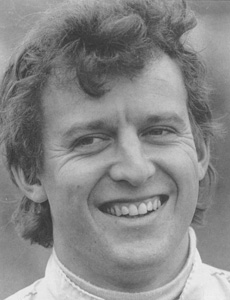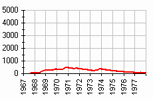Гонщики, O | |
Oliver, Jackie Курсивом отмечены гонщики, |
| Джеки ОливерOliver, JackieOliver, Keith Jack |
 (c) 'Who is Who' by Steve Small, 2000 Родился: 14.08.1942 Чадуэлл-Хелт, Ромфорд, Эссекс Сезонов в Ф1: Лет в Ф1: 11 Гран При: Старты: 49* *не стартовал: 4 Победы: - подряд: Подиумы: - подряд: Поул-позиции: - подряд: Первый ряд: - подряд: Быстрые круги: - подряд: Лучший финиш: Лучший старт: 2 Дубли: Хет-трики: Лидирование старт/финиш: Большие шлемы: Круги: - лидирования: 36 Километры: - лидирования: |
Год | Команда | Шасси |
It's hard to believe that Oliver has been involved in motor sport for nearly forty years, having started with a Mini way back in 1961. He really came to prominence, however, driving a Lotus Elan, with which he embarrassed many a more powerful GT car in 1965, before moving into single-seaters the following year, when he showed much promise but achieved little success in Formula 3.
Jack's breakthrough year was 1967 when he drove the Lotus Components F2 car, doing himself a power of good in the eyes of Colin Chapman by taking fifth overall and the F2 class win in the German GP. With the death of Jim Clark at Hockenheim, Oliver was promoted into the Lotus team as number two to Graham Hill, but had something of a torrid baptism, crashing in both the Monaco and French GPs before redeeming himself with a splendid performance at Brands Hatch, where he led the British GP until engine failure. Seen as nothing more than a stop-gap by Chapman, who had set his heart on having Jochen Rindt in the team, Oliver bowed out with a fine third place in Mexico to take up a two-year contract with BRM.
The following season was a miserable one for BRM, but Oliver salvaged his year by racing for John Wyer's Gulf team. Paired with Ickx, he won at Sebring and they then scored a famous victory at Le Mans, Jack's contribution to which is often overlooked. The second year of his BRM deal brought scarcely more joy than the first, even though he had the excellent P153 to drive. Apart from a fifth place in Austria and a third in the Gold Cup at Oulton Park, the catalogue of retirements made depressing reading. Jack's sharp, young, Essex personality didn't sit well with Louis Stanley, who preferred drivers typical of a different era, so a parting of the ways was probably inevitable. The season was not completely lost, for Oliver ventured into Can-Am with the Autocast project and took
three second places. Meanwhile he returned to sports cars once more with Wyer, winning the Daytona 24 Hours and Monza 1000 Km, but was released after he preferred to take up an invitation to race Don Nichols' Shadow in Can-Am. Keen to keep his Formula 1 career afloat, Oliver arranged some drives in a third McLaren, and his versatility was proven when he stood in for Mark Donohue in Penske's Trans-Am Javelin to take third place at Riverside.
With the 1972 British GP being held at Brands Hatch (one of Jack's favourite circuits), he drove for BRM, but he spent most of the season testing Shadow's latest Can-Am car. He got on well with Don Nichols, and when Shadow entered Grand Prix racing the following year Oliver had one of the drives. It was a perplexing season, with the DN1 chassis proving difficult to sort, but a wet race in Canada saw Jack take third place - although many insist that in fact he won, as the lap charts were thrown into confusion by the use of a pace car. Oliver concentrated on Can-Am alone in 1974 and it paid off handsomely with him winning the series at the fourth attempt in Nichols' machines. Although increasingly involved in the management side of things, Oliver contested the 1975 and 1976 US F5000 series, before a Formula 1 swansong as a driver in 1977. He took the Shadow DN8 into fifth place at the Race of Champions, and later in the year raced in his final Grand Prix in Sweden, finishing ninth.
Along with Alan Rees and Tony Southgate, Oliver quit Shadow at the end of the year and unveiled the 1978 Arrows Formula 1 car, which was subsequently the subject of legal action from Nichols over design copyright. Jack then spent the next decade keeping Arrows on the F1 grid but in 1990 he sold out to the Japanese Footwork concern, whose name the team took. Oliver remained at the helm as a director, and regained control of the team at the end of 1993 when the parent company hit financial difficulties in Japan. The Arrows name was back.
In 1996 Oliver sold a major portion of the team to Tom Walkinshaw and was content to take a back-seat role as the new incumbent set about trying to end Arrows' winless streak, which has now lasted for more than two decades. At the start of 1999 Jack finally disposed of his remaining interest in the team he founded, walking away an exceedingly wealthy man after the reportedly massive buyout.
(c) 'Who is Who' by Steve Small, 2000
| © WildSoft, 1995-2020 |



